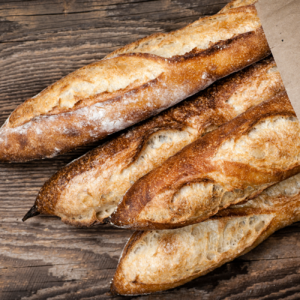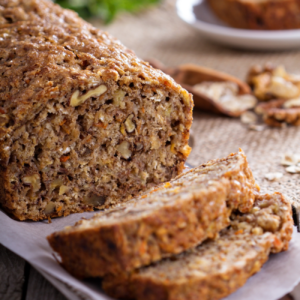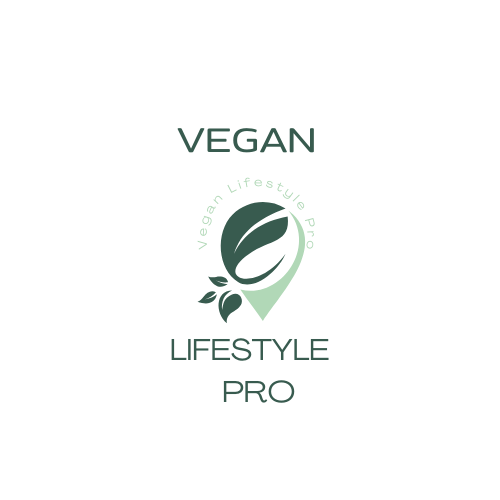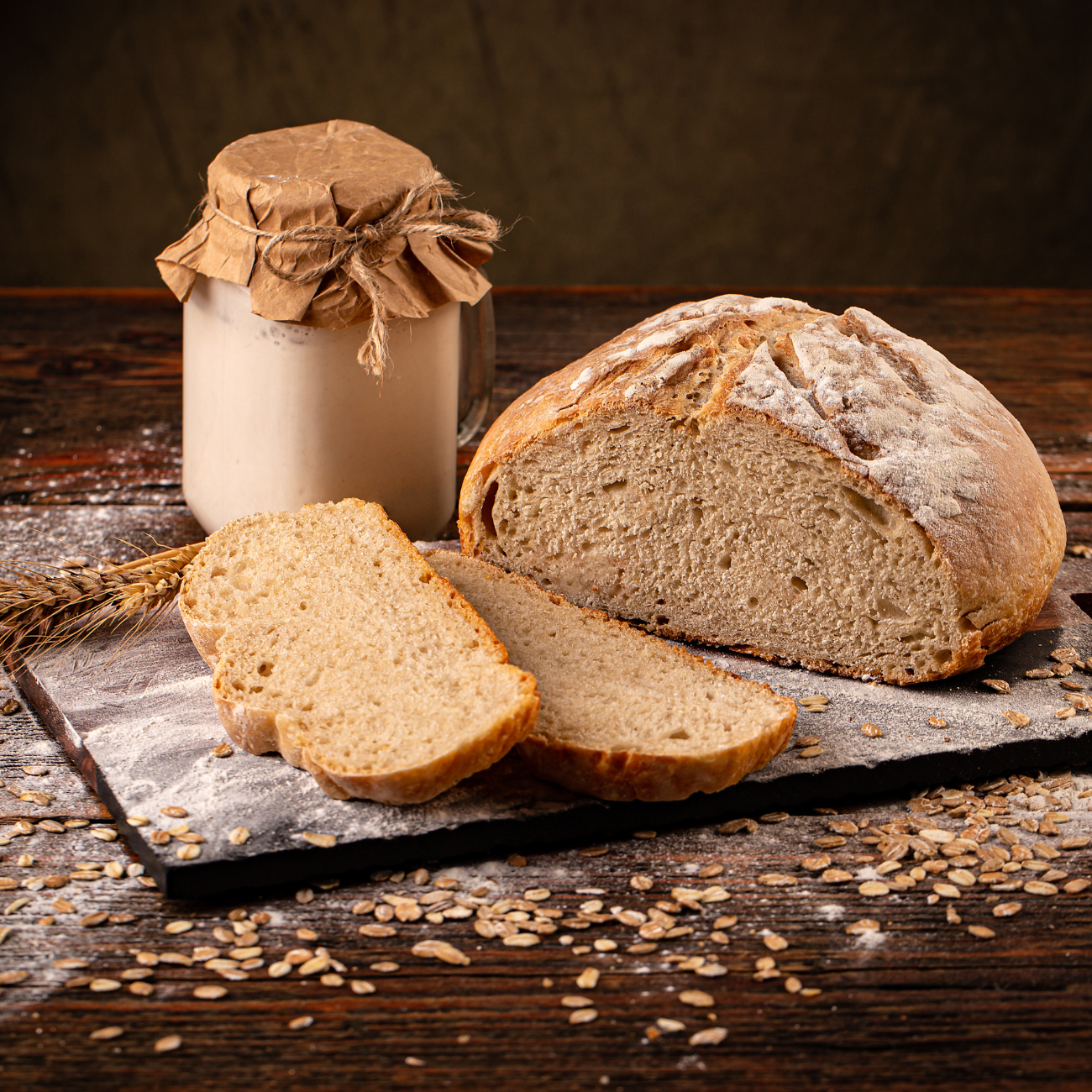The smell of fresh bread in the kitchen brings comfort and nostalgia to many. But what if you could enjoy this feeling while following a plant based diet? Welcome to vegan bread baking, where endless possibilities and rewards await.
Imagine cutting into a soft, golden loaf of homemade vegan bread. Its texture and taste are just like traditional bread. This is what happens when you bake vegan bread at home. From simple loaves to decadent cinnamon rolls, the process is rewarding and empowering.
Key Takeaways:
- Discover the secrets to baking soft, flavorful vegan bread at home
- Explore essential ingredients and equipment needed for successful vegan bread baking
- Learn step by step techniques for preparing, proofing, and baking vegan bread
- Troubleshoot common challenges and master time-saving tips for vegan bread baking
- Dive into a world of creative vegan bread recipes, from sweet to savory
Introduction to Vegan Bread Baking.
Vegan bread is a tasty and flexible choice for those wanting to try bread making without animal products. It’s made from plants, so it’s free from dairy, eggs, and other animal stuff. This makes it a great option for animal lovers and those with dietary restrictions.

What is Vegan Bread?
Vegan bread doesn’t use eggs, milk, butter, or other animal products. Instead, it uses plant-based stuff like flour, water, and yeast. It also might have aquafaba (chickpea liquid) or flax eggs (ground flax seeds mixed with water) to help it stick together.
Benefits of Baking Vegan Bread at Home.
- Full control over the ingredients: Baking vegan bread at home lets you pick what goes into it. This way, you can make sure it fits your diet and health needs.
- Exploration of flavors and textures: Vegan bread baking lets you try different flours, spices, and flavors. It’s a chance to get creative and find new favorites.
- Healthier options: Making vegan bread at home can be healthy. You can use whole grain flours, less sugar, and add nuts, seeds, or fruits for extra nutrition.
Whether you’re new to baking or already a pro, making vegan bread at home is fun and tasty. It’s a chance to explore and enjoy the many flavors and textures vegan bread has to offer!
Essential Ingredients for Vegan Bread.
Making tasty vegan bread at home means picking the right ingredients. You need the right flour, binders, and egg replacers. Each one is key to getting the perfect texture and rise. Let’s look at what you need to make delicious vegan bread.
Flour Varieties for Vegan Bread.
There are many flours you can use for vegan bread. You can try whole wheat, gluten-free flours like buckwheat or rice, or nut flours like almond or coconut. The important thing is to find the mix that works best for you.
Binding Agents and Egg Replacers.
Vegan bread needs special binders since it doesn’t have eggs. Psyllium husk powder, flaxseeds, and aquafaba are great options. They help the dough stick together and rise right. Finding the right mix of these binders is key for the perfect bread.
| Ingredient | Description | Ratio |
|---|---|---|
| Psyllium Husk Powder | A crucial ingredient for gluten free vegan bread recipes, acting as a binder and providing structure. | 30g (3 tbsp) psyllium husk powder to 450ml (1.8 cups) water |
| Flaxseeds | Ground flaxseeds can be used to create a “flax egg” as an egg replacer, adding moisture and binding properties. | 1 tbsp ground flaxseeds + 3 tbsp water = 1 egg |
| Aquafaba | The liquid from canned chickpeas, which can be whipped to create a meringue like consistency, acting as an egg replacer. | 3 tbsp aquafaba = 1 egg |
Knowing how these ingredients work helps you make vegan bread that’s not just tasty but also has the right texture and rise.
Equipment Needed for Vegan Bread Baking.
Baking vegan bread at home needs the right tools. You’ll need a stand mixer and proofing baskets. These vegan bread baking equipment are key to making great homemade loaves. Let’s look at the tools for homemade vegan bread every baker should have.
A stand mixer is essential for kneading and mixing. It makes the dough preparation easy. Choose a model with a dough hook for the best results.
You’ll also need bread pans to bake your loaves. Pick sturdy pans in different sizes for various recipes. A 9×5 inch pan is great for many vegan bread recipes.
| Tool | Purpose |
|---|---|
| Stand Mixer | Kneading and mixing dough |
| Bread Pans | Shaping and baking loaves |
| Dough Scraper | Cutting and shaping dough |
| Proofing Baskets | Allowing dough to rise and take shape |
A dough scraper is crucial for handling dough. It makes shaping easier. This tool is a must have for vegan bread.
Proofing baskets, or brotforms, are great for dough to rise. They help the dough keep its shape and crust. These baskets are essential for a perfect loaf.
With these vegan bread baking equipment and essential baking tools for vegan bread, you’re ready to bake. You’ll make delicious homemade vegan loaves that everyone will love.
Step by Step Guide to Baking Vegan Bread at Home.
Baking vegan bread at home is a fun and rewarding experience. It lets you make delicious, healthy loaves that fit your diet. This guide will help you learn how to bake vegan bread from start to finish, whether you’re new or experienced.
Preparing the Dough.
The first step is to make the dough. Start by mixing dry ingredients like flour, yeast, salt, and any seasonings or herbs you want. Then, mix wet ingredients like plant based milk, oil, and sweeteners in another bowl.
Slowly add the wet ingredients to the dry ones. Knead the dough until it’s smooth and elastic. This step is key for the bread’s texture and rise.
Proofing and Shaping the Loaf.
Now, let the dough rise, or proof. Put it in a lightly oiled bowl, cover it, and let it rest in a warm, draft free spot. It should double in size in about 1 hour. This vegan bread proofing lets yeast create air pockets.
After rising, punch down the dough to get rid of air bubbles. Shape it into your preferred loaf, like a sandwich loaf or rustic boule. Put the dough in a greased baking pan or on a parchment-lined baking sheet.
Baking the Vegan Bread.
The last step is baking the loaf. Preheat your oven to 350°F to 425°F, as the recipe suggests. Put the dough in the oven and bake until the crust is golden and the inside is about 200°F.
Watch the bread closely while it bakes, as oven times and temperatures can differ. Once it’s done, take it out of the oven. Let it cool on a wire rack before slicing and enjoying your homemade vegan bread.

Troubleshooting Common Vegan Bread Baking Issues.
Baking vegan bread at home can be rewarding but comes with challenges. You might face issues like a dense texture, uneven rising, or a gummy interior. There are ways to fix these vegan bread baking problems. By understanding the causes and using troubleshooting strategies, you can make perfect vegan bread every time.
Dense or Heavy Texture.
Is your vegan bread dense or heavy? It might be due to the wrong egg replacer or over mixing. Using the right egg substitute and avoiding over-mixing can help. This way, you can achieve a lighter texture.
Uneven Rising.
Uneven rising in vegan bread can be a problem. It’s often caused by the wrong egg replacer or over mixing. Choose the right egg substitute and mix gently to solve this issue.
Gummy Interior.
A gummy or dense interior can be due to too much moisture or fat. Adjusting the liquid and fat in your recipe can fix this. This will help your bread have a light and fluffy crumb.
By tackling these common vegan bread baking problems and using the right troubleshooting techniques, you can improve your vegan bread. With practice and a bit of experimentation, you’ll make vegan bread that always turns out right.
Baking Vegan Bread at Home: Tips and Tricks.
Vegan bread baking is rewarding and delicious, but it needs extra effort. We’ve gathered helpful tips and tricks to make it easier. These will improve your bread’s flavor and texture.
Time Saving Techniques.
Batch preparation is a big help in vegan bread baking. Mixing and kneading multiple batches at once saves time. Using a stand mixer also cuts down on manual labor, giving you more time for other things.
Another trick is to speed up the rising process. Proofing the dough in a warm, humid place makes it rise faster. This saves minutes in your preparation time.
Flavor and Texture Enhancers.
Improving your vegan bread’s flavor and texture is easy. Try adding herbs and spices like rosemary, thyme, or garlic powder. For sweetness, use maple syrup, agave, or coconut sugar.
Adding nuts, seeds, or dried fruit can also enhance texture. They add a nice crunch or chewiness. You can customize your vegan bread in many ways.
| Ingredient | Quantity | Purpose |
|---|---|---|
| Vegan Butter | 2 tablespoons (28 g) | Enhances flavor and texture |
| Water and Non-Dairy Milk | 1/2 cup each | Provides moisture and richness |
| Bread Flour or All-Purpose Flour | 3 cups (361 g) | Forms the base of the bread |
| Fine Kosher Salt | 1 1/4 teaspoons | Enhances flavor |
| Cane Sugar | 2 tablespoons (25 g) | Adds a touch of sweetness |
| Instant Yeast | 2 teaspoons (6 g) | Helps the dough rise |
By using these tips and tricks, you’ll make delicious, flavorful, and beautiful vegan bread. Your friends and family will love it.

Variations and Flavors for Vegan Bread
Vegan baking is all about creativity. This section explores the wide world of flavored vegan bread. You can make sweet or savory breads that everyone will love.
Sweet Vegan Bread Recipes.
Enjoy the sweet smells of vegan bread. It’s made with fruits, nuts, and spices. Think about vegan banana bread with ripe bananas and walnuts.
Or try vegan pumpkin bread with warm spices and maple syrup. It’s perfect for any time of year.
- Vegan Cinnamon Swirl Bread
- Lemon Blueberry Vegan Bread
- Chocolate Chip Vegan Banana Bread
Savory Vegan Bread Recipes.
Explore savory vegan bread recipes. They show how versatile this food can be. Try vegan rosemary focaccia for a tasty snack.
Or enjoy vegan sun dried tomato and olive bread. It’s great with soups and stews.
- Vegan Garlic Knots
- Cheesy Vegan Bread Rolls
- Vegan Jalapeño Cheddar Bread
These sweet and savory breads open up a world of flavors. You can make bread that fits your taste and diet. Start baking and show off your skills.
Storing and Freezing Homemade Vegan Bread.
Keeping your homemade vegan bread fresh and tasty is key. This guide will show you how to store vegan bread and freeze homemade vegan bread. You’ll learn how to make your vegan bread shelf life last longer.
Your vegan bread stays soft and tasty for 3-4 days at room temperature. Store it in a paper bag or bread box. Avoid airtight containers to prevent moisture buildup and softening of the crust.
For longer storage, the freezer is your best friend. Slice the bread first, then freeze the slices on a baking sheet. Once they’re frozen, put them in an airtight bag or container. This way, your vegan bread stays good for up to 3 months.
To enjoy your frozen bread, thaw the slices at room temperature or warm them in the oven. This brings back the fresh-baked taste and smell, letting you enjoy your bread whenever you want.
| Storage Method | Shelf Life |
|---|---|
| Room Temperature | 3-4 days |
| Freezer | Up to 3 months |
By using these easy storage and freezing tips, your homemade vegan bread stays fresh and delicious. Enjoy your baking efforts with confidence, knowing your vegan bread will always be at its best.
Baking Vegan Bread at Home: Nutritional Benefits
Plant based diets are becoming more popular, making vegan bread’s nutritional value key for health lovers. Making vegan bread at home offers many benefits. It’s a healthier choice compared to many store bought options.
Vegan bread doesn’t have cholesterol, unlike traditional bread. Traditional bread often uses eggs or dairy, which can raise cholesterol levels. Vegan bread, without these animal products, is better for your heart and lowers the risk of heart disease.
Vegan bread also has less saturated fat. Saturated fats, found in dairy and meat, can lead to obesity and diabetes. Vegan bread, made with plant-based fats, is a healthier option for your overall health.
Homemade vegan bread can also be higher in fiber, vitamins, and minerals. It includes oats, nuts, flaxseed meal, and psyllium husks. These ingredients are full of fiber, nutrients, and antioxidants.
The baking process makes the bread even more nutritious. The oven is set to 400°F (200°C), and the bread bakes for 55 to 65 minutes. This method keeps the bread’s good ingredients, making it a nourishing part of your diet.
By baking vegan bread at home, you get a tasty and healthier option. It’s a nutritious and sustainable choice for your diet.
Resources for Vegan Bread Bakers.
Starting your vegan bread baking journey is exciting and rewarding. Having reliable resources can be very helpful. Whether you’re new or experienced, these tips will guide and inspire you.
There are websites with lots of vegan bread baking recipes. Online communities connect you with others who love baking. These resources can improve your skills, introduce new flavors, and solve problems.
Websites for Vegan Bread Baking Inspiration.
- The Spruce Eats: Offers a vegan bread section with tasty recipes.
- Minimalist Baker: Provides easy vegan baking recipes, including bread.
- King Arthur Baking: Provides vegan bread recipes and vegan bread baking tips.
Vegan Bread Baking Books.
- “Vegan Bread: Over 50 Delicious Recipes for Artisan Loaves, Rolls, and Pastries” by Nadine Horn and Jörg Mayer
- “The Artisan Vegan Bread Cookbook” by Miyoko Schinner
- “The Bread Baker’s Apprentice” by Peter Reinhart (with vegan adaptations)
Online Vegan Bread Baking Communities.
Connecting with vegan bread enthusiasts is great. It offers insights and support. Join:
- The Vegan Bread Bakers group on Facebook
- Reddit’s r/veganrecipes and r/breadit subreddits
- Vegan Bread Baking forums on VeggieBoards
Looking for new vegan bread recipes, tips, or inspiration? These resources will help you bake delicious, cruelty free bread at home.
Conclusion.
Exploring vegan bread baking has shown us that making tasty, animal friendly bread at home is easy and rewarding. You can learn the key ingredients, tools, and methods. This opens up a world of flavors and health benefits from homemade vegan bread.
The author tried making 6 gluten free vegan breads in a week and 13 in two weeks. This journey was tough but very rewarding. They experimented with different flours like ground oats and millet, showing the creativity in vegan bread.
Keep these tips in mind as you bake more vegan bread: use a heavy loaf pan, check the oven temperature, and let the bread cool before slicing. With these tips and the resources out there, you’ll make delicious, healthy bread. It will please your taste buds and nourish your body.
F.A.Q:
What is vegan bread?
Vegan bread is made without animal products like eggs, milk, or butter.
What are the benefits of baking vegan bread at home?
Making vegan bread at home lets you control the ingredients. You can make healthier choices and try new flavors and textures.
What types of flour can be used for vegan bread baking?
You can use whole wheat, gluten-free, or nut based flours for vegan bread.
What are the essential equipment and tools needed for vegan bread baking?
You’ll need a stand mixer, bread pans, a dough scraper, and proofing baskets. These tools help make great vegan loaves.
How do I prepare the dough for vegan bread?
First, mix the ingredients. Then, knead the dough. Finally, let it rise.
How can I troubleshoot common issues when baking vegan bread?
For problems like a dense texture or uneven rising, try adjusting the recipe. A gummy interior might mean the dough didn’t rise enough.
What are some time-saving techniques for vegan bread baking?
To save time, prepare batches in advance. Use a stand mixer for mixing. And, try speeding up the rising process.
What are some flavor and texture enhancers for vegan bread?
Add herbs, spices, or specialty ingredients to enhance flavor and texture. This lets you customize your bread.
What are some sweet and savory vegan bread recipes to try?
Try fruit-based breads, herb infused loaves, or cheese studded rolls. These recipes offer a variety of tastes and textures.
How should I store and freeze homemade vegan bread?
Store vegan bread at room temperature, in the fridge, or freezer. This keeps it fresh longer.
What are the nutritional benefits of baking vegan bread at home?
Homemade vegan bread is often healthier than store-bought. It can have less cholesterol and saturated fat. Plus, it’s packed with fiber, vitamins, and minerals.
Where can I find more resources for vegan bread baking?
Check out websites, books, and online communities for more recipes and tips. They offer support and expert advice for your baking journey.

